Using Hasura Cloud with a GCP Postgres database¶
Table of contents
- Introduction
- Step 0: Sign up or log in to Hasura Cloud
- Step 1: Create a Hasura Cloud project
- Step 2: Create a Postgres DB on GCP (skip if you have an existing DB)
- Step 3: Allow connections to your DB from Hasura Cloud
- Step 4: Construct the database connection URL
- Step 5: Finish connecting the database
- Next steps
Introduction¶
This guide explains how to connect a new or existing GCP Postgres database to a Hasura Cloud project.
Step 0: Sign up or log in to Hasura Cloud¶
Navigate to Hasura Cloud and sign up or log in.
Step 1: Create a Hasura Cloud project¶
On the Hasura Cloud dashboard, create a new project:
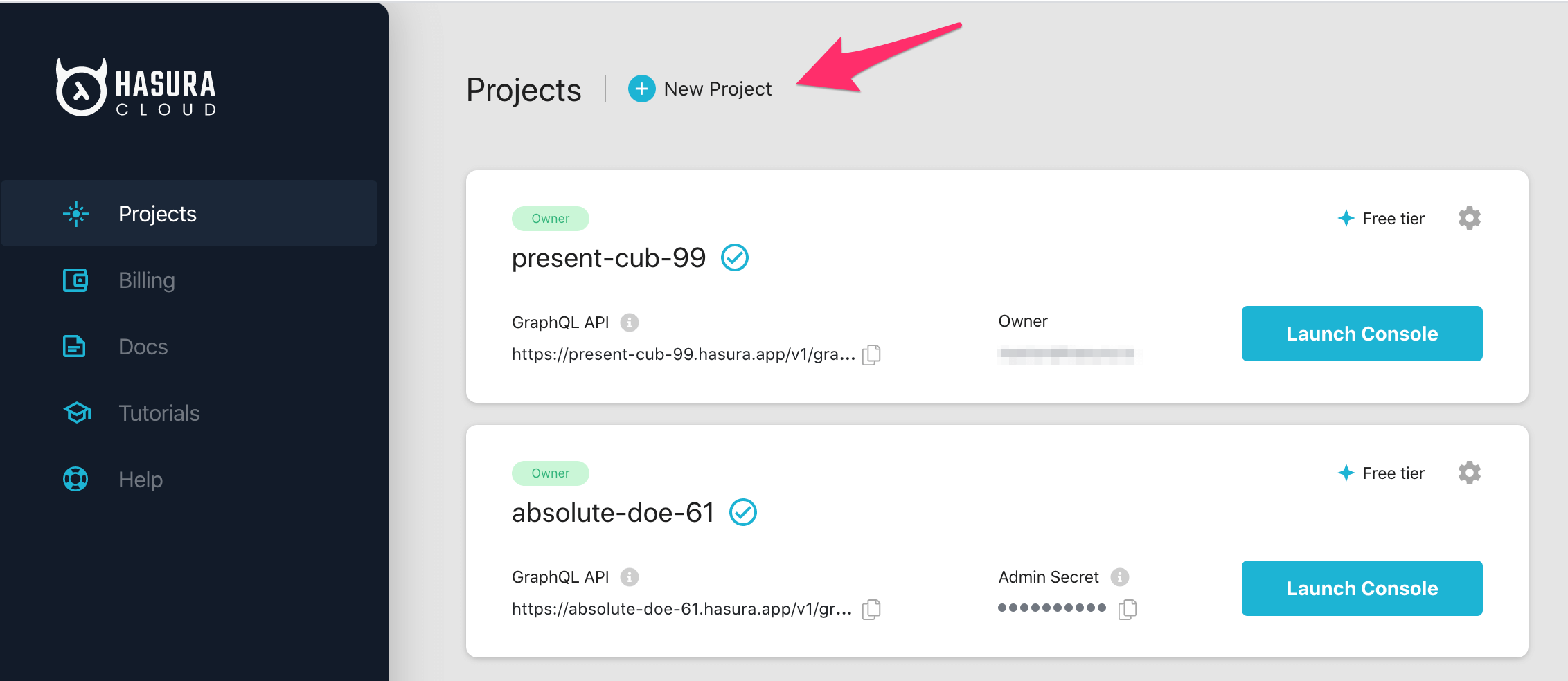
After the project is initialized successfully, click on Launch console to open the Hasura console in your browser.
On the Hasura console, navigate to Data -> Manage -> Connect Database -> Connect existing database:
You will get prompted for a Postgres Database URL. We will create this in the next step and then come back here.
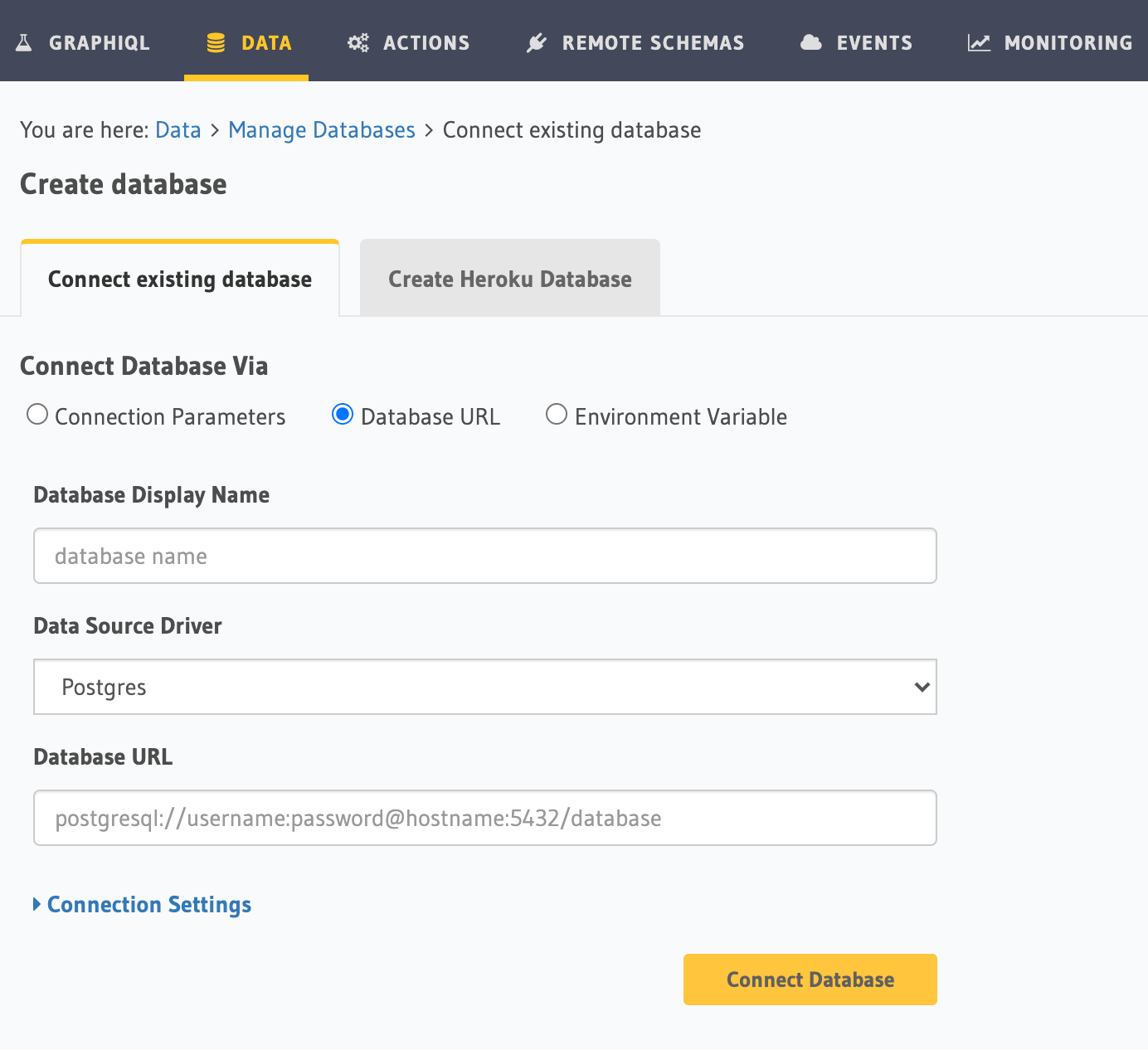
Step 2: Create a Postgres DB on GCP (skip if you have an existing DB)¶
Log into the GCP console.
On the left-side navigation, scroll down to Storage and click on SQL:
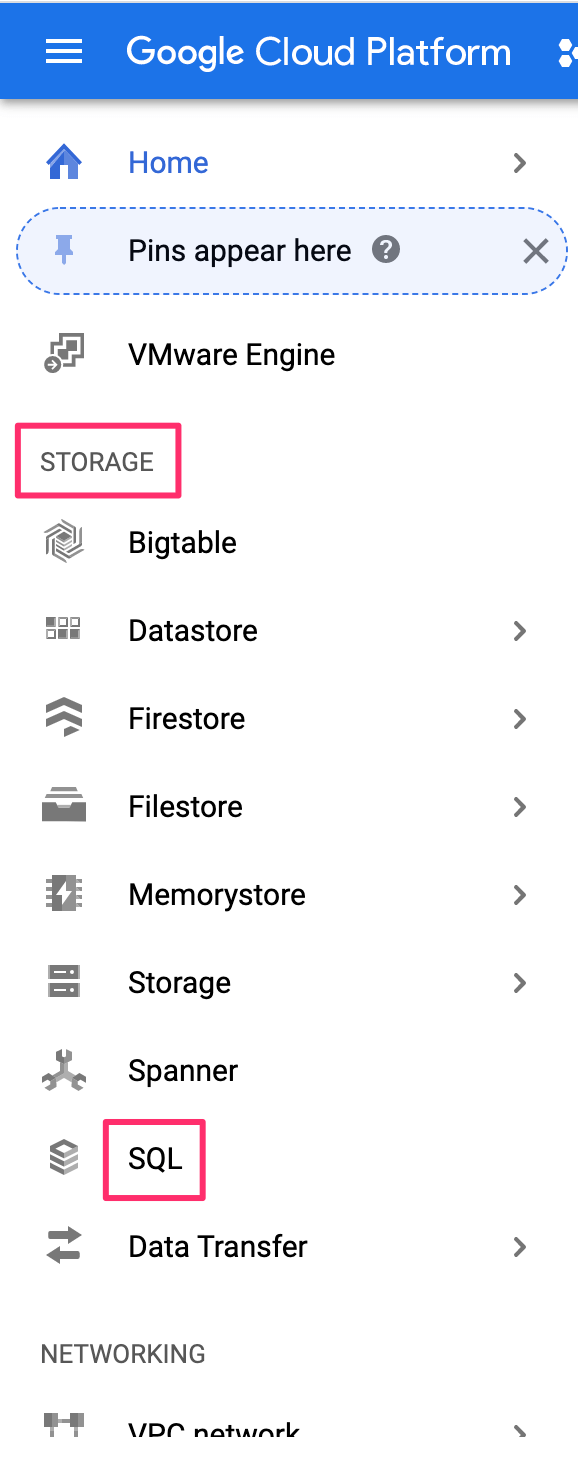
On the top, click on Create instance:

Select Postgres:

Select an instance ID, as well as a default user password. If required, choose a specific region and zone.
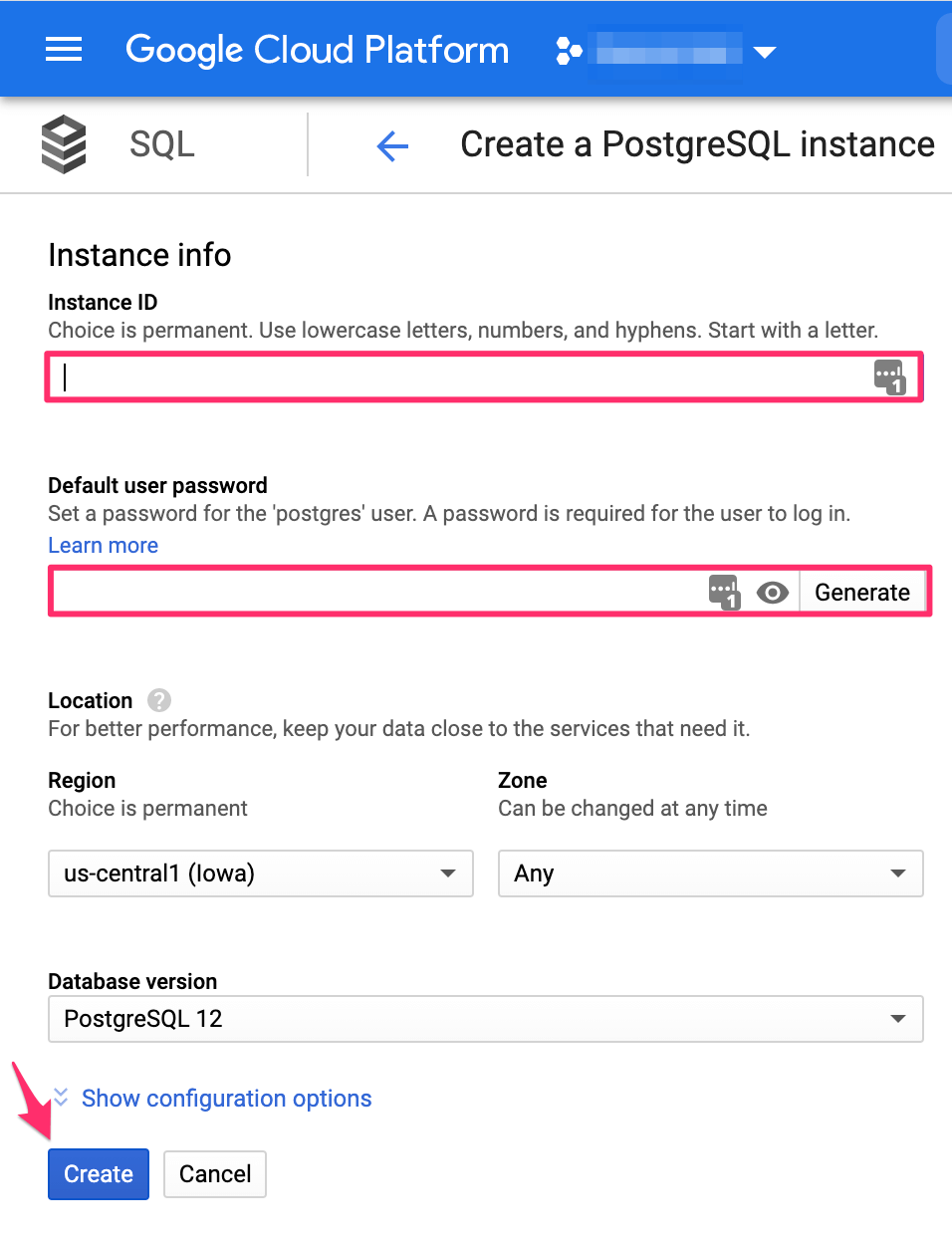
Then click Create.
Step 3: Allow connections to your DB from Hasura Cloud¶
On the dashboard of your GCP database instance, on the left sidebar, click on Connections. Then scroll down to the checkbox Public IP, and click + Add network:
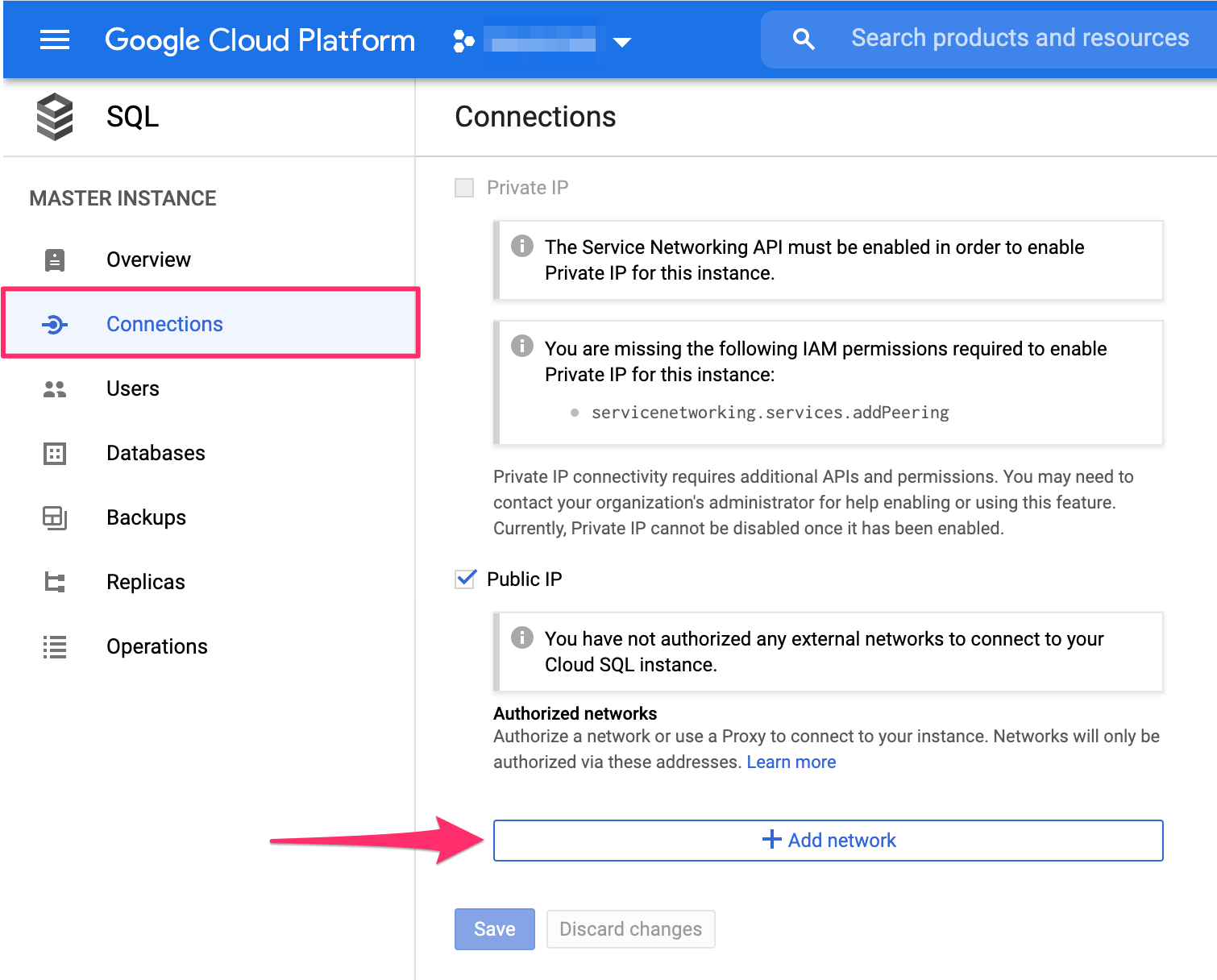
You can choose an optional name (e.g. “Hasura”).
Copy the IP address from the copy icon in the Hasura Cloud IP field on the project’s details view on Hasura Cloud.
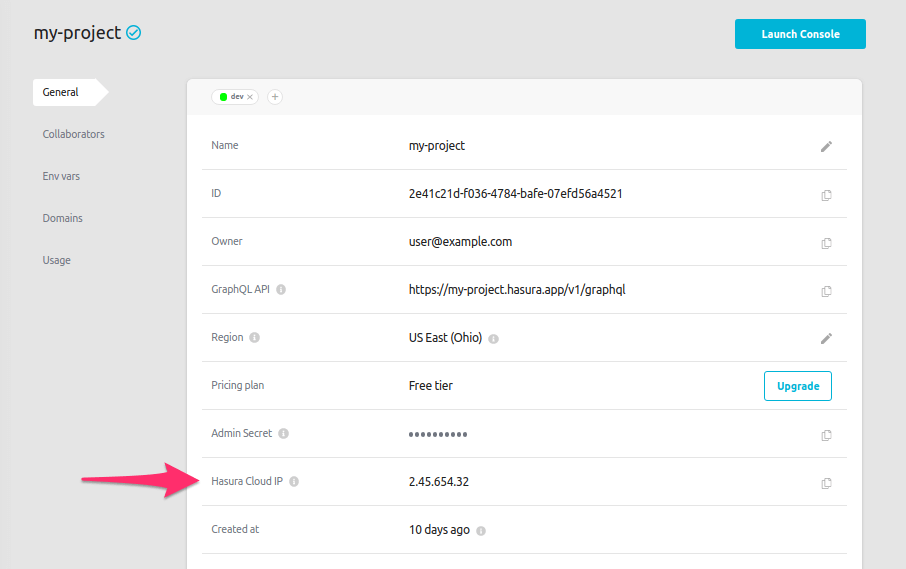
Enter the Hasura IP address that you copied:
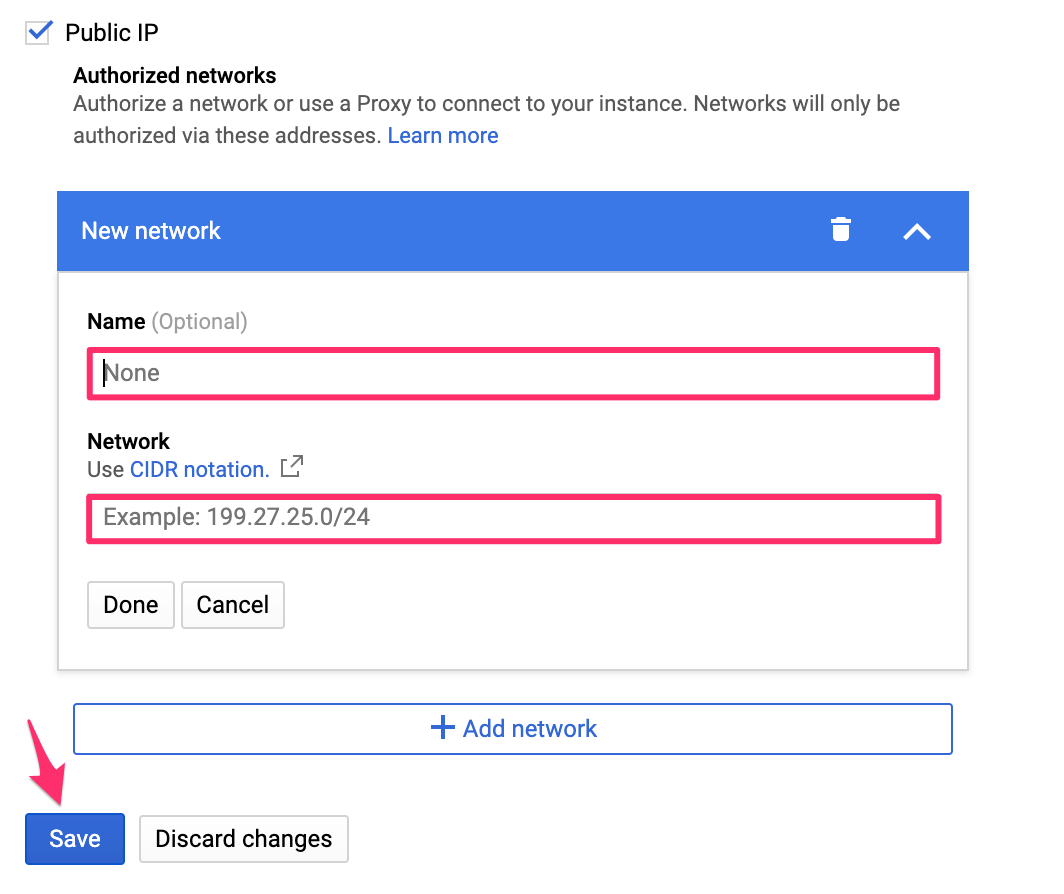
Then click Save.
Note
If you’re using a database user other than the default one, make sure to give it the right Postgres permissions.
Step 4: Construct the database connection URL¶
The structure of the database connection URL looks as follows:
postgresql://<user-name>:<password>@<public-ip>:<postgres-port>/<db>
user-name: If you have a separate database user, the user name will be their name. If you didn’t specify a user, the default user name ispostgres.password: If you have a separate database user, use their password. Otherwise, use the password that you chose when creating the database.public-ip: The public IP can be optained by clicking onOverviewon the left-side navigation and then scrolling down toConnect to this instance:
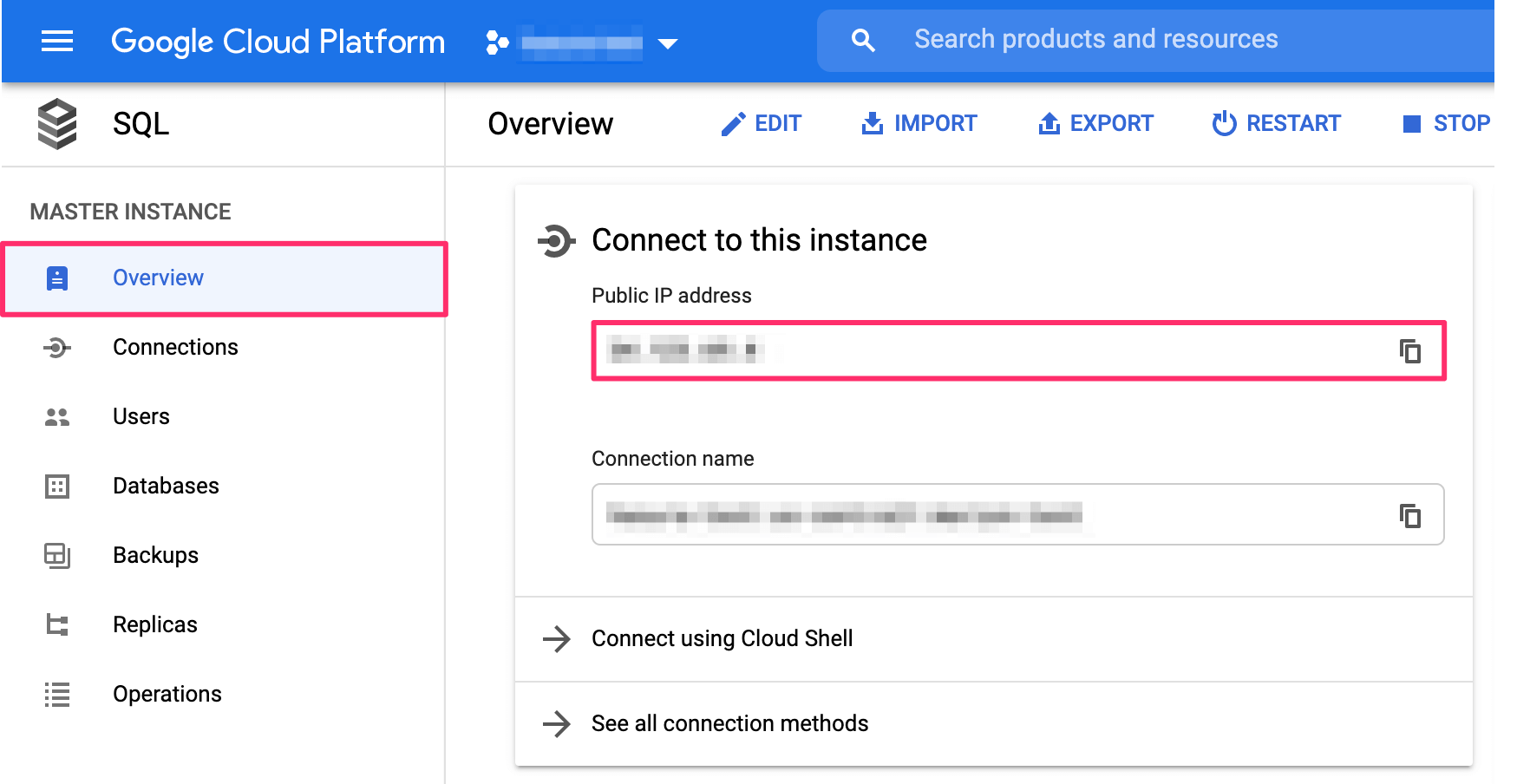
postgres-port: The default port for Postgres is5432if not specified otherwise.db: The DB ispostgresby default unless otherwise specified.
Step 5: Finish connecting the database¶
Back on Hasura Console, enter the database URL that we retrieved in step 4:
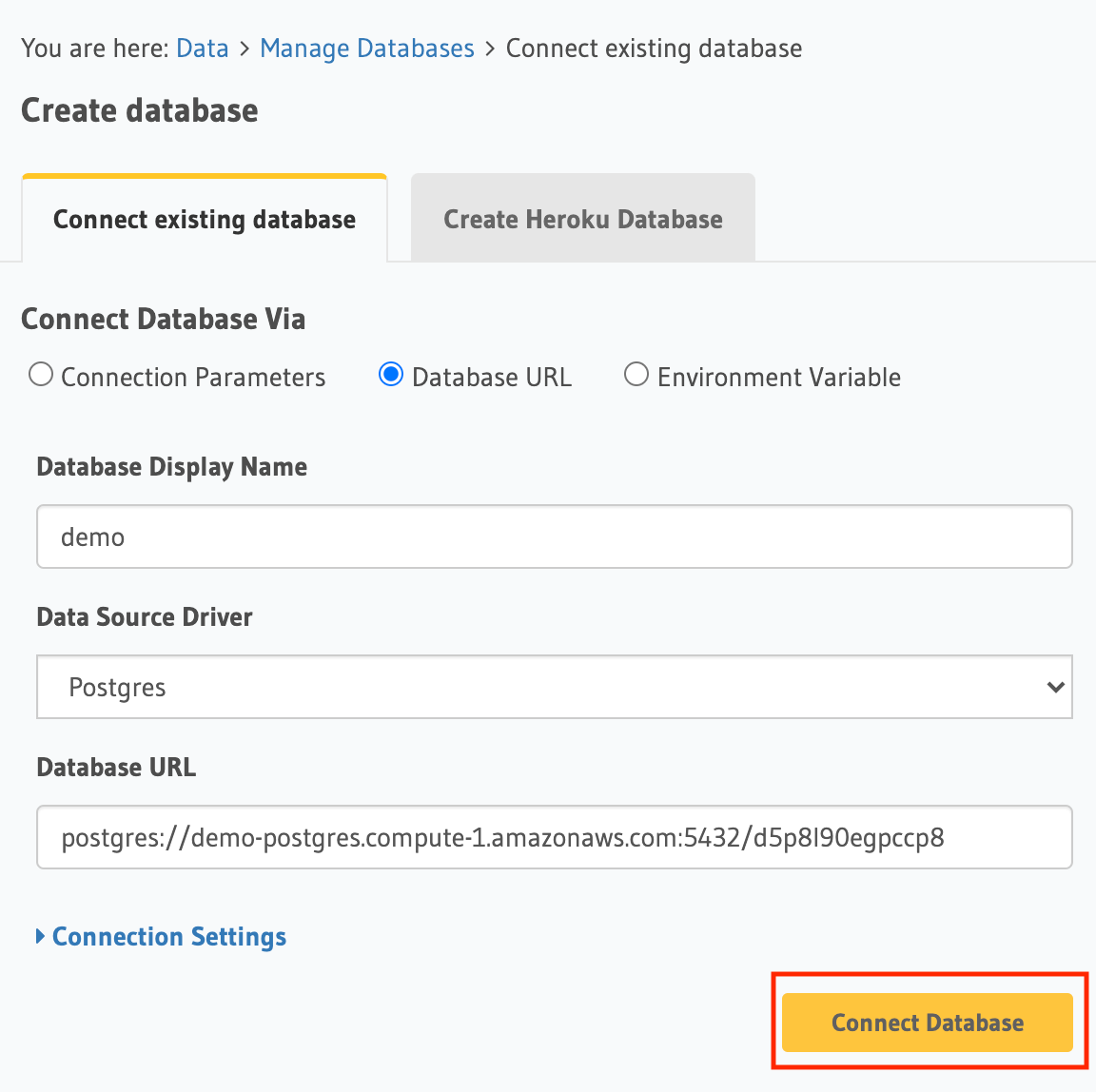
Then click Connect Database.
Note
For security reasons, it is recommended to set database URLs as env vars and using the env vars to connect to the databases in place of the raw database URLs.
Voilà. You are ready to start developing.
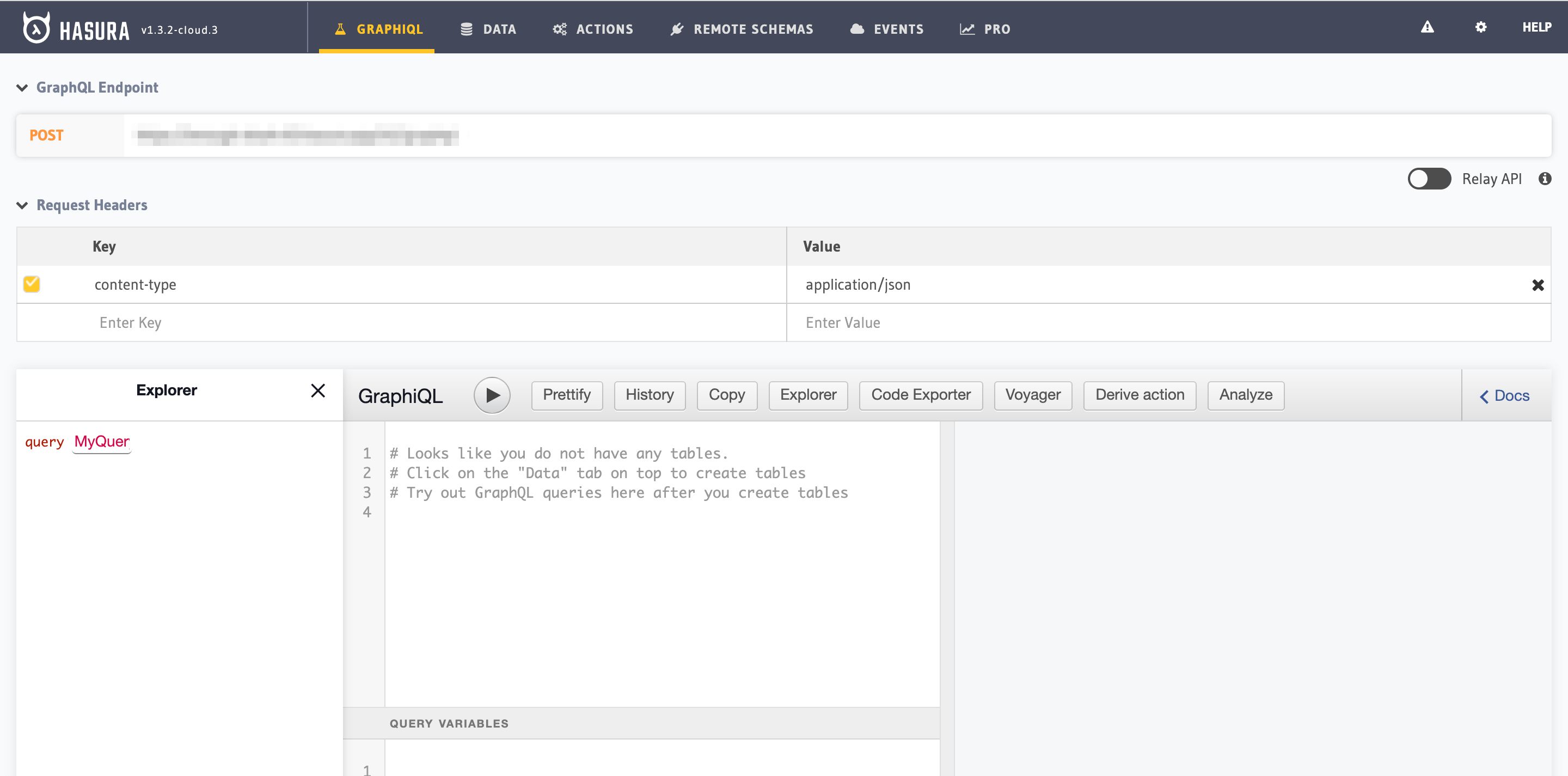
Next steps¶
You can check out our 30-Minute Hasura Basics Course and other GraphQL & Hasura Courses for a more detailed introduction to Hasura.
You can also click the gear icon to manage your Hasura Cloud project. (e.g. add collaborators, env vars or custom domains).

